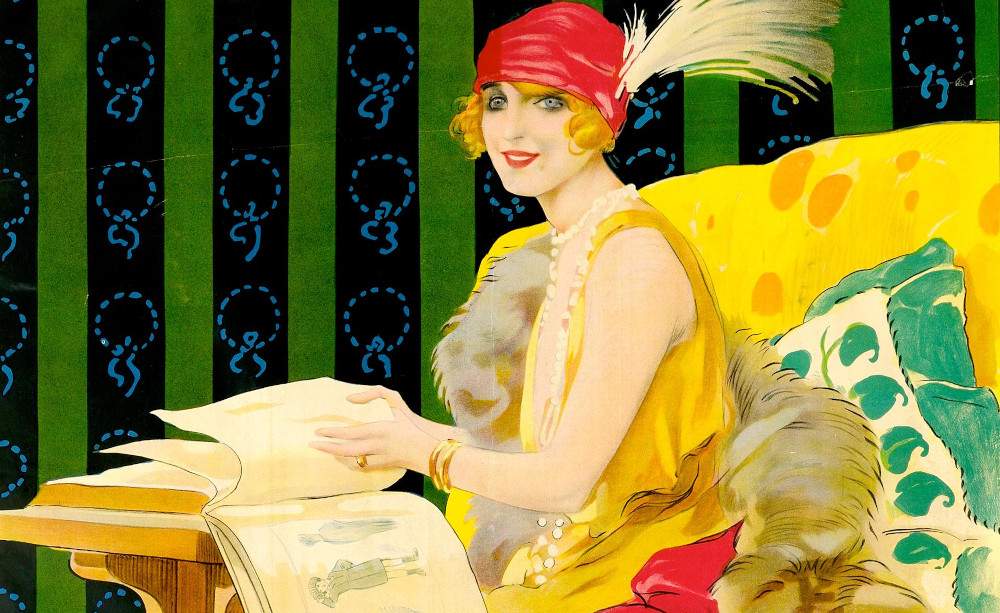Magnani-Rocca Foundation chronicles the birth of Italian fashion, with 150 works
From September 10 to December 11, 2022, the Magnani Rocca Foundation in Mamiano di Traversetolo (Parma) presents the exhibition Fashion and Advertising in Italy 1850-1950, curated by Dario Cimorelli, Eugenia Paulicelli and Stefano Roffi. The birth of Italian fashion will be told through one hundred and fifty works ranging from the late 19th century to the mid-20th century.
Fashion and advertising are part of the collective imagination of an entire country. The exhibition aims to investigate how the rise of department stores responds to the demands of a new society, daughter of the industrial revolution, which finds in clothes and objects, the witnesses of its own existence and diversity. The development of the new centers of consumption gradually changes scale in size and speed: from the traditional small stores where bespoke clothes were modeled and sewn, the department store is born, customers enter lush buildings overflowing with goods and can freely choose by finding, next to the tailored suit, ready-to-wear and, depending on availability, compose their trousseau. Cozy places, glitzy but not too much, where prices are always displayed, where merchandise offerings provide shopping options for all budgets, and where gifts large and small are offered in abundance. Among department stores, competition is fierce: accusations of imitation, the search for catchphrases, the creation, production and use of every promotional tool, from posters, to illustrated catalogs, postcards, brochures and newspaper advertisements. Each business then studied its own promotional strategy and declined it in the different media where it proposed what artists and illustrators were devising, interpreting the languages of Italian customs and society in a period of unprecedented creativity.
The exhibition in the Villa dei Capolavori will illustrate the birth of Italian fashion through the communication tools that supported it, from posters to magazines to department store catalogs. Of great importance will be the role of cinema.
Between the nineteenth and twentieth centuries, two factors concurred in the development of the clothing market: “the coming forward, with the second industrial revolution, of new social partners who aspired to participate and to remark their role on the stage of society, and the consequent birth of a new form of consumer offerings, the department stores, born in France and spread in a short time in Italy as well as throughout Europe and the United States,” explains Dario Cimorelli.
“Competition among department stores is fierce, and every medium, every idea, every novelty is an opportunity to capture and build customer loyalty. The poster, because it is larger, more obvious, is the tool that from the late nineteenth century to the early 1950s will paper the walls of cities, building models and therefore worlds and ways of participation and representation,” Stefano Roffi continues. From Mele to Miccio in Naples, from Unione Cooperativa to La Rinascente in Milan, to Zingone in Rome, each warehouse proposed itself through advertising, as did accessory companies-from hats to gloves to footwear. The exhibition recounts this particular nascent world of communication by presenting about one hundred large posters, most of them restored for the occasion and never exhibited to the public since the time of their creation, dwelling also on two unique cases that distinguish Italy from any country in the world: the communication of Magazzini Mele in Naples, the most impressive, capillary, rich promotional activity ever, which began in 1889 and continued until the second decade of the 20th century, and the communication of La Rinascente in Milan, which chose Marcello Dudovich as its artistic director from 1921 to 1956, thus maintaining a unique and unrepeatable stylistic coherence."
“Until the 1920s, women’s fashion had been basically French, while England was the reference for men’s fashion. But this does not mean that the idea and project of creating an Italian fashion did not exist. This thread runs through the magazines of the nineteenth century in Italy until it becomes linked to patriotism after the period of national unification,” Eugenia Paulicelli concludes. In fact, at the beginning of the century, this trace acquires great visibility with the pioneering work of Rosa Genoni, who from the pages of women’s magazines launches the project of a national fashion as ’pure Italian art’ that, freed from subservience to the French, would be able to draw inspiration from the classical world and the masterpieces of the Renaissance, combining craftsmanship and industry. Later, during the twenty-year fascist period, a profile of Italian fashion would be built (such as the Saloni in Turin, the Ente Nazionale Moda founded in 1935) that was the basis of what would become great Italian fashion from the postwar period onward."
The exhibition is made possible thanks to a special collaboration with the Veneto Regional Museums Directorate - Museo Nazionale Collezione Salce in Treviso, as well as the Civica Raccolta delle Stampe “Achille Bertarelli” - Castello Sforzesco - Milan, and the Museo e Real Bosco di Capodimonte. It is made possible thanks to the contribution of Fondazione Cariparma and Crédit Agricole Italia.
For info: www.magnanirocca.it
Hours: Tuesday to Friday from 10 a.m. to 6 p.m.; Saturday, Sunday and holidays from 10 a.m. to 7 p.m. Closed Mondays.
Image: Leopoldo Metlicovitz, La Rinascente, detail (1921; chromolithograph on cardboard, 196 x 140 cm; Treviso, Museo Nazionale Collezione Salce.
 |
| Magnani-Rocca Foundation chronicles the birth of Italian fashion, with 150 works |
Warning: the translation into English of the original Italian article was created using automatic tools. We undertake to review all articles, but we do not guarantee the total absence of inaccuracies in the translation due to the program. You can find the original by clicking on the ITA button. If you find any mistake,please contact us.





























